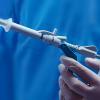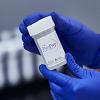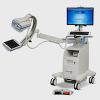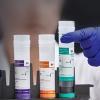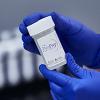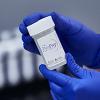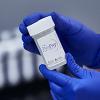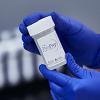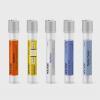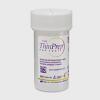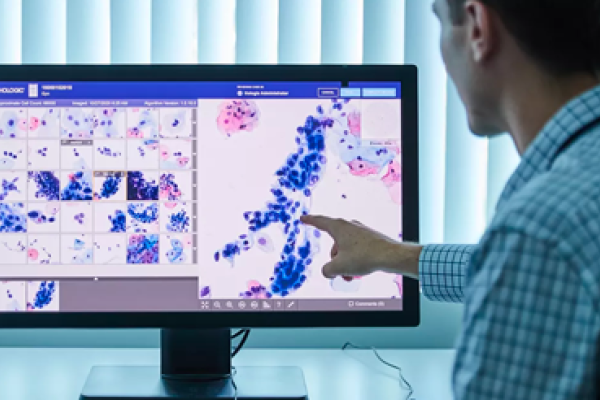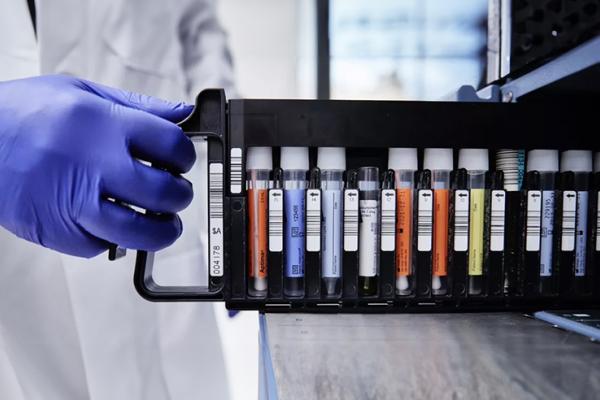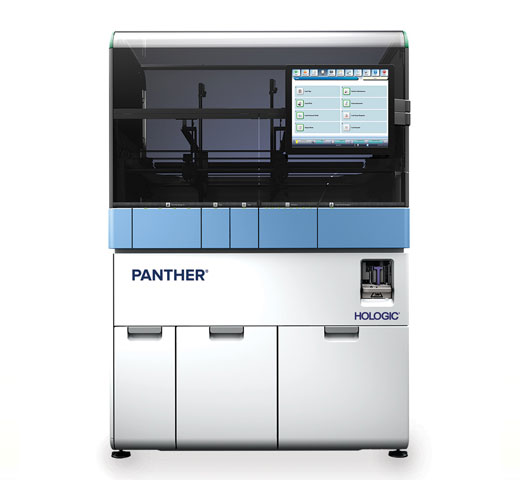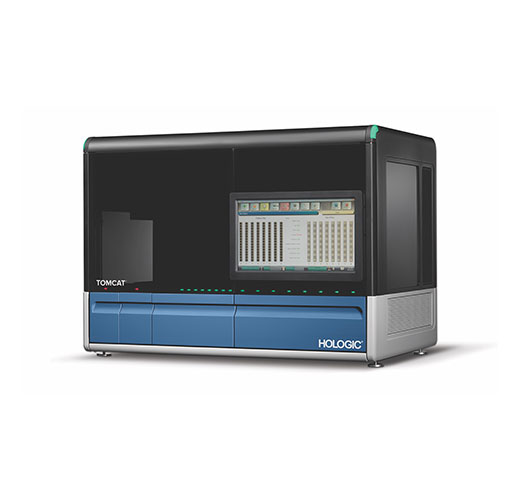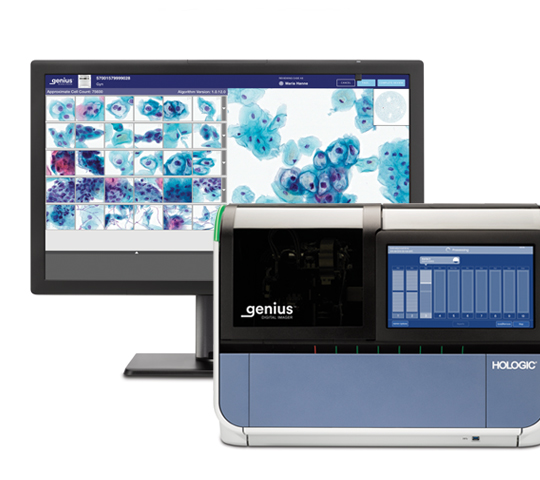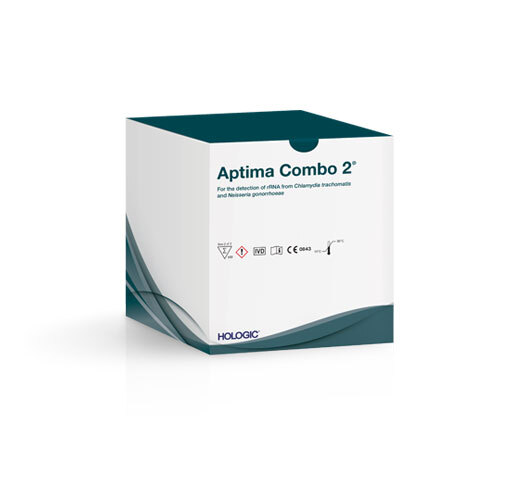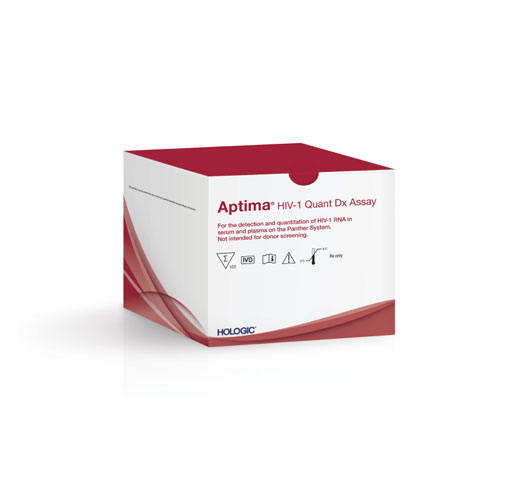Aptima® HPV Assays
Identifying the presence and threat of high-risk human papillomavirus (HPV) infection.
Information for Healthcare Professionals

Overview
Documents
Don’t Just Sense a Presence. Sense a Threat
Nearly all sexually active women and men will face a HPV infection risk at some point in their lives. Very few will go on to develop HPV related cancers.1 The Aptima HPV assay targets high-risk HPV mRNA.3 Studies have shown mRNA identifies the presence and activity of a high-risk HPV infection.2,3
The Aptima HPV assay targets the oncogenes E6/E7 mRNA, indicative of the HPV infections most likely to lead to disease.2,3
HPV plays a major role in the development of precancerous cervical abnormalities and cervical cancer, with HPV being the underlying cause of almost 100% of squamous cell carcinomas and up to 90% of adenocarcinomas.4
Maximising the Benefits of Screening Programs
With intervals between recommended screenings for cervical cancer extended, identifying patients at risk becomes increasingly important. The Aptima HPV assay, which targets HPV mRNA, has demonstrated the same excellent sensitivity and higher specificity in comparison to DNA based assays to maximise the benefits of cervical cancer screening programmes.5
Proven Performance
Validated for co-testing, HPV primary screening and ASCUS triage, the Aptima HPV Assay has been extensively validated.6 Cross-sectional studies,7-12 longitudinal studies up to 10 years,13-15 and real-life screening program data16 support the performance of the Aptima HPV assay.
Reduce Unnecessary Overtreatment
Improved specificity means minimising false-positive test results, and unnecessary over-treatment for women. It allows clinicians to target the right patients for colposcopy, leading to more efficient screening programs and increased savings. The Aptima HPV Assay showed up to 24% fewer false-positive test results compared to a DNA-based test.17
Scale Automation
The performance of the HPV assays, combined with a high throughput, fully automated workflow and a complete sample traceability.18
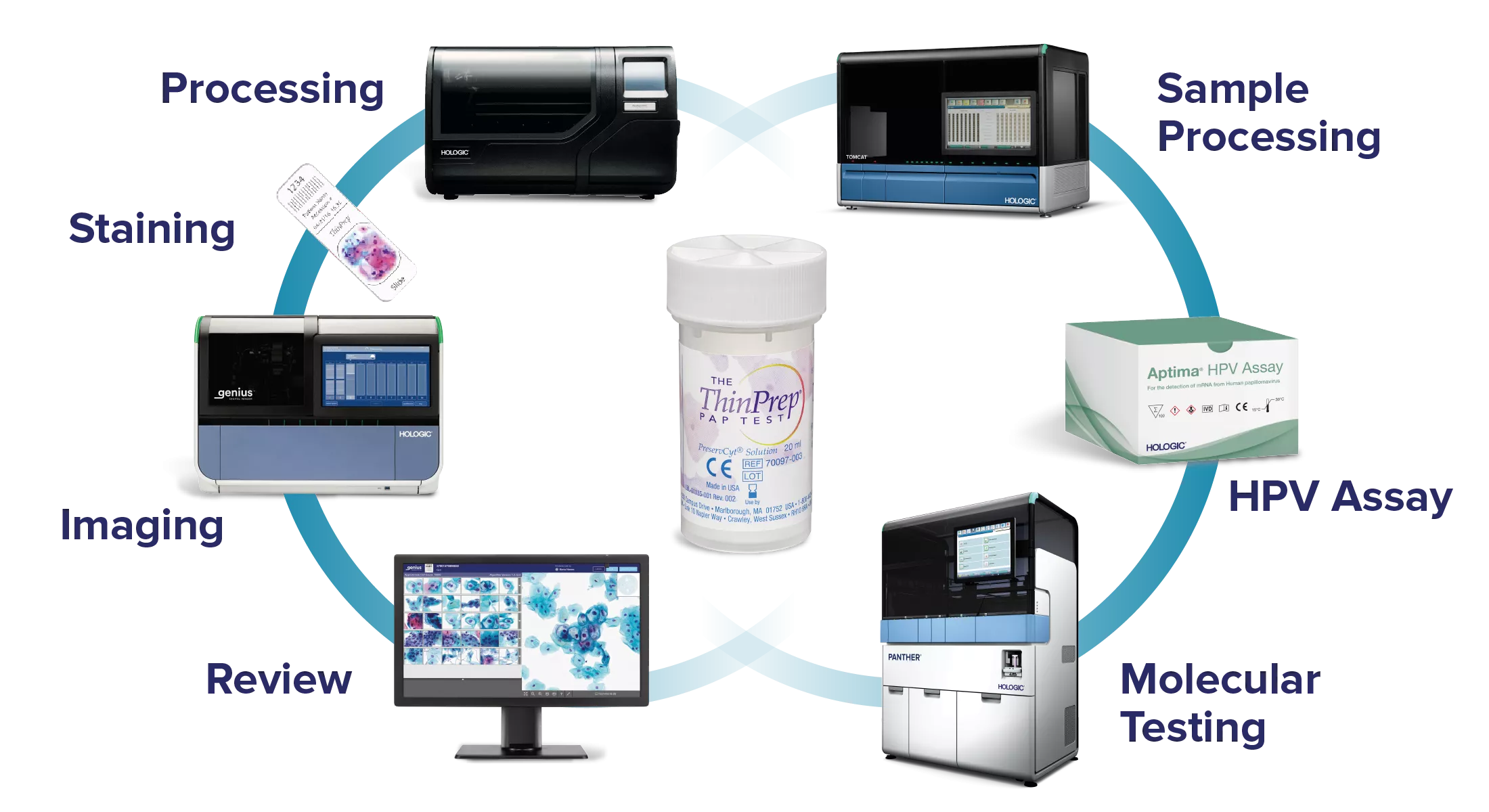
Working With You to Advance Cervical Health
We pride ourselves on aiming to be champions of women’s health and global leaders in screening, dedicated to advancing the accuracy and early detection of cervical cancer. From HPV to cytology, and now also AI-based digital diagnostics, we offer a comprehensive screening portfolio, from sample collection to diagnosis.
Advancing the Early Detection of Cervical Cancer
24% Fewer False-Positive
test results with Aptima HPV assay compared to a DNA-based test16
100+ Million
Aptima HPV tests sold globally19
30 Countries
supporting cervical cancer diagnosis and screening19
10+ years
of longitudinal data supporting assay use20-24
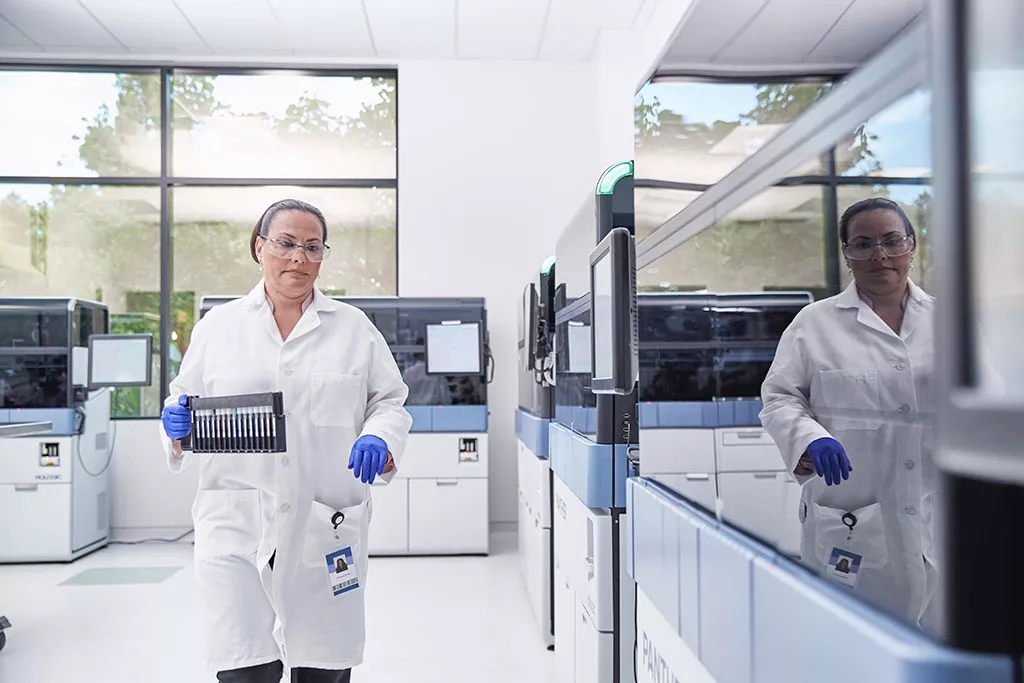
Aptima HPV Assay Design25
- Highly sensitive detection of E6/E7 mRNA oncogenes with isothermal Transcription mediated Amplification (TMA)
- The Aptima HPV assay includes an internal process control as a control of nucleic acid extraction and amplification
- Prevents cross-contamination: Single tube extraction to detection process
- Minimises presence of inhibitors and enhances specificity: Target capture extracts mRNA targets specifically
Aptima HPV Assay Overview
Insights
AIWH National Cervical Screening Website: https://www.aihw.gov.au/getmedia/5c42bc77-589b-42ef-9bbd-fd91890e4920/aihw-can-149-ncsp-2022.pdf?v=20230605165735&inline=true (accessed July 2024)
Tinelli A, Leo G, Pisanò M. et al. HPV viral activity by mRNA HPV molecular analysis to screen the transforming infections in precancer cervical lesions. Curr Pharm Biotechnol. 2009 Dec;10(8):767-771.
Cuschieri K, Whitley M, Cubieet H al. Human Papillomavirus Type Specific DNA and RNA Persistence–Implications for Cervical Disease Progression and Monitoring. J Med Virol. 2004 May;73(1):65-70.
Guan P, Howell-Jones R, Li N et al. Human papillomavirus types in 115,789 HPV-positive women: a meta-analysis from cervical infection to cancer. Int J Cancer. 2012 Nov 15;131(10):2349-59.
Saslow D, et al. American Cancer Society, American Society for Colposcopy and Cervical Pathology, and American Society for Clinical Pathology Screening Guidelines for the Prevention and early Detection of Cervical Cancer. Am J Clin Pathol. 2012 Apr;137(4):516-42.
Aptima HPV Assay [package insert] AW-22202 Rev. 001. San Diego, CA: Hologic, Inc; 2023.
Szarewski A, Ambroisine L, Cadman L et al. Comparison of predictors for high-grade cervical intraepithelial neoplasia in women with abnormal smears. Cancer Epidemiol Biomarkers Prev. 2008 Nov;17(11):3033-3042.
Monsonego J, Hudgens MG, Zerat L, et al. Evaluation of oncogenic human papillomavirus RNA and DNA tests with liquid-based cytology in primary cervical cancer screening: the FASE study. Intl J Cancer. 2011 Aug;129(3):691-701.
Cuzick J, Cadman L, Mesher D, et al. Comparing the performance of six human papillomavirus tests in a screening population. Br J Cancer. 2013 Mar;108:908-913.
Iftner T, Becker S, Neis KJ, et al., Head-to-Head Comparison of the RNA-Based Aptima Human Papillomavirus (HPV) Assay and the DNA-Based Hybrid Capture 2 HPV Test in a Routine Screening Population of Women Aged 30 to 60 Years in Germany. J Clin Microbiol. 2015 Aug;53(8):2509-16.
Cook D, Smith LW, Law J, et al., Aptima HPV Assay versus Hybrid Capture® 2 HPV test for primary cervical cancer screening in the HPV FOCAL trial. J Clinical Virology 2017 Feb;87:23–29.
Haedicke J. , Iftner T. A review of the clinical performance of the Aptima HPV assay 2016 Mar;76 Suppl 1:S40-S48.
Strang T, Gottschlich A, Cook D et al. Long-term cervical precancer outcomes after a negative DNA- or RNA-based human papillomavirus test result. Am J Obstet Gynecol. 2021 Nov;225(5):511.e1-511.e7.
Iftner et al., Longitudinal Clinical Performance of the RNA-Based Aptima Human Papillomavirus (AHPV) Assay in Comparison to the DNA-Based Hybrid Capture 2 HPV Test in Two Consecutive Screening Rounds with a 6-Year Interval in Germany, J Clin Microbiol. 2019 Jan 2;57(1):e01177-18. doi: 10.1128/JCM.01177-18.
Forslund O et al., HPV-mRNA and HPV-DNA detection in samples taken up to seven years before severe dysplasia of cervix uteri. Int J Cancer. 2019 Mar. 1;144(5):1073-1081. doi: 10.1002/ijc.31819.
Rebolj M, Cuschieri K, Mathews CS, et al. Extension of cervical screening intervals with primary human papillomavirus testing: observational study of English screening pilot data. BMJ 2022; 376:e068776.
Aptima HPV Assay [package insert] AW-22202 Rev. 001. San Diego, CA: Hologic, Inc.; 2023 Table 16
PB-00746-FRA-FR Rév 002 © 2019 Hologic, Inc. PSS Brochure https://www.thinprep.com.au/ (accessed July 2024)
Data based on Hologic sales numbers since launch in 2012 to 31Jan2020.
Reid et al. Human Papillomavirus Oncogenic mRNA Testing for Cervical Cancer Screening. Am J Clin Pathol, 2015,144:473-483.
Cook et al, Aptima HPV Assay versus Hybrid Capture® 2 HPV test for primary cervical cancer screening in the HPV FOCAL trial J. Clin. Virol. 2017;87:23-29.
Strang T, et al. Long-term cervical precancer outcomes after a negative DNA-or RNA-based human papillomavirus test result. Am J ObstetGynecol. 2021 Nov;225(5):511.1-511. e7, doi: 10.1016/ jajog.2021.05.038.
Cook et al, Comparative performance of human papillomavirus messenger RNA versus DNA screening tests at baseline and 48 months in the HPV FOCAL trial. J. Clin. Virol, 2018;108:32-37. https://doi [doi]. org/10.1016/jcv.2018.09.004.
Forslund O, et al. HPV-mRNA and HPV-DNA detection in samples taken up to seven years before dysplasia of cervix uteri. Int J Cancer. 2018; doi: 10.1002/ jc.31819.
de Sanjose S, Quint WG, Alemany L et al. Human papillomavirus genotype attribution in invasive cervical cancer: a retrospective cross-sectional worldwide study. Lancet Oncol. 2010;11(11):1048-1056.
Wheeler CM, Hunt WC, Joste NE Ket al. Human papillomavirus genotype distributions: implications for vaccination and cancer screening in the United States. J Natl Cancer Inst. 2009 Apr 1;101(7):475-87.
Coutlée F, Ratnam S, Ramanakumar AV et al. Distribution of human papillomavirus genotypes in cervical intraepithelial neoplasia and invasive cervical cancer in Canada. J Med Virol. 2011 Jun;83(6):1034-41.
Hopenhayn C, Christian A, Christian WJ et al. Prevalence of human papillomavirus types in invasive cervical cancers from 7 US cancer registries before vaccine introduction. J Low Genit Tract Dis. 2014 Apr;18(2):182-9.
Related Products
1434
2797
Hologic BV, Da Vincilaan 5, 1930 Zaventem, Belgium.
Notified Body number wherever applicable


